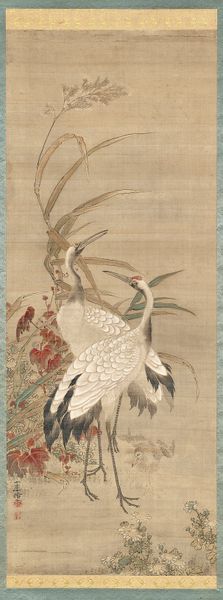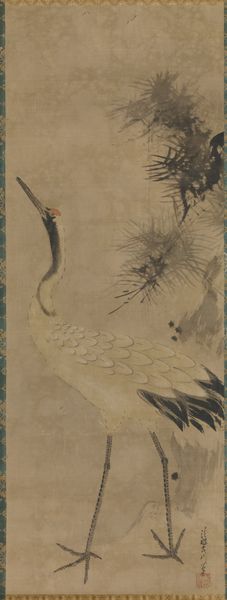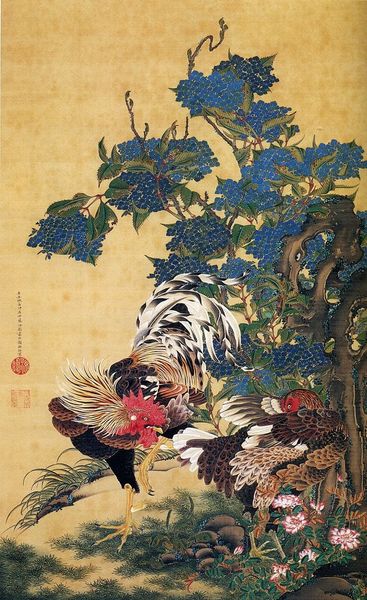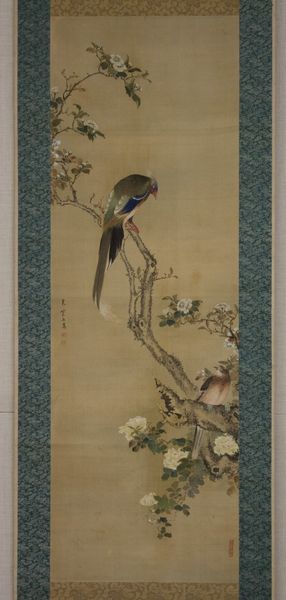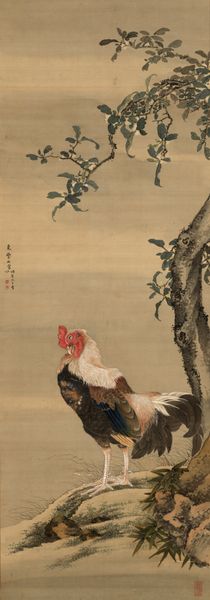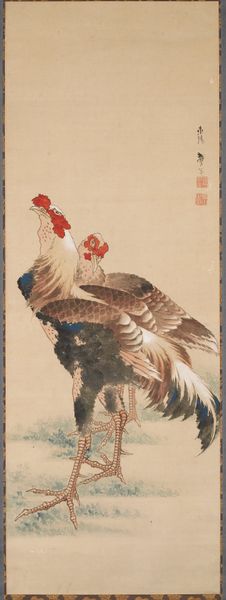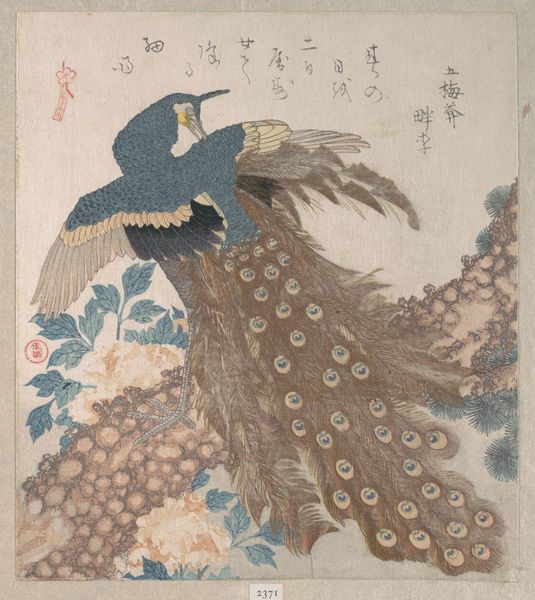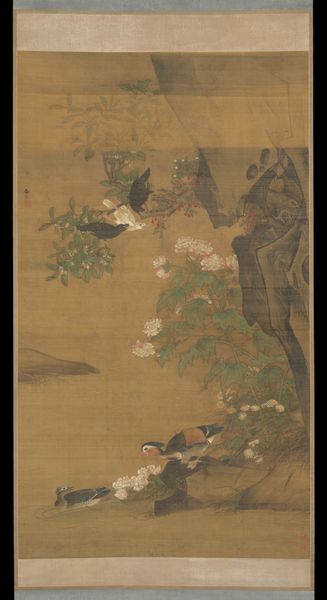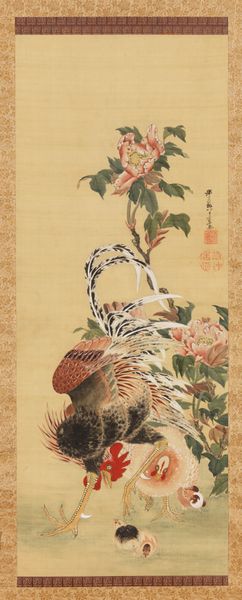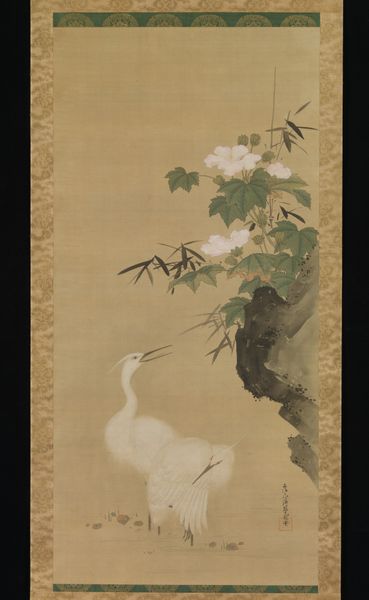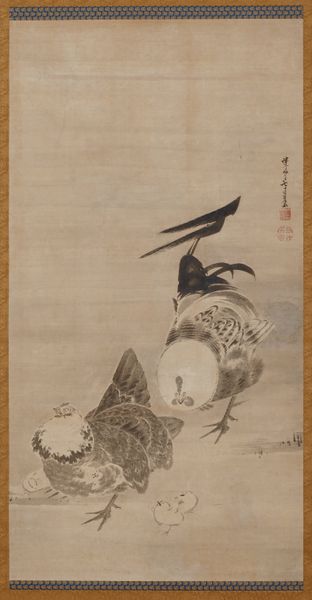
painting, watercolor
#
painting
#
asian-art
#
landscape
#
figuration
#
watercolor
#
orientalism
#
history-painting
#
watercolor
Dimensions: Image: 38 5/8 × 17 1/4 in. (98.1 × 43.8 cm) Overall with mounting: 73 1/2 × 23 1/8 in. (186.7 × 58.7 cm) Overall with knobs: 73 1/2 × 25 1/4 in. (186.7 × 64.1 cm)
Copyright: Public Domain
Curator: Here we have Sō Shizan’s “Rooster in a Storm,” created around 1783, rendered delicately in watercolor. Editor: It feels deceptively serene given the title. The washes are soft, almost like a hazy memory, yet the rooster is so precisely detailed. Curator: The tension between those elements is intriguing. The setting certainly informs its production. Consider the Japanese Edo period’s artistic landscape, when artists frequently found patronage in a burgeoning merchant class. This watercolor scroll format itself speaks to that social context – a relatively accessible and portable art form. Editor: And within that accessibility lies a symbolic richness. Roosters are potent symbols across cultures. Here, with the backdrop of bamboo and perhaps morning glories, we see possible allusions to perseverance and transient beauty, respectively. Does the rooster's facing away suggest anything? Perhaps reluctance to confront challenges? Curator: Or a keen awareness of unseen danger. I wonder about the sourcing of the pigments themselves. What level of access did Shizan have to high-quality materials? Was this commissioned, or a piece made for the open market? These factors drastically shape its monetary and cultural value at the time. The execution does feel particularly attuned to specific buyers with an education on literature and classical references, but the material itself speaks to a desire to offer affordable luxury for the average consumer. Editor: The watercolor technique is quite skillful in rendering plumage detail—the delicate rendering makes the animal feel more life-like—but these very artistic conventions, down to the inclusion of plants and animals, carried layers of meaning to a contemporary viewer that may escape us today. The storm may be an allusion to tumultuous times, but these birds also can symbolize guardianship. It begs the question, what message of protection can we find? Curator: Examining the watercolor itself tells part of the story—revealing Shizan's command of brushstroke. But yes, considering that within broader trends and the rooster's various associated symbolisms adds depth to our reading. Editor: Indeed. Both the brushstrokes and the symbols help unravel a tiny bit of Shizan’s process as it communicates across eras. Curator: Exactly. By looking closely at the material and method we catch faint echoes of artistic intention, shaped and sometimes constrained by its historical environment.
Comments
No comments
Be the first to comment and join the conversation on the ultimate creative platform.

